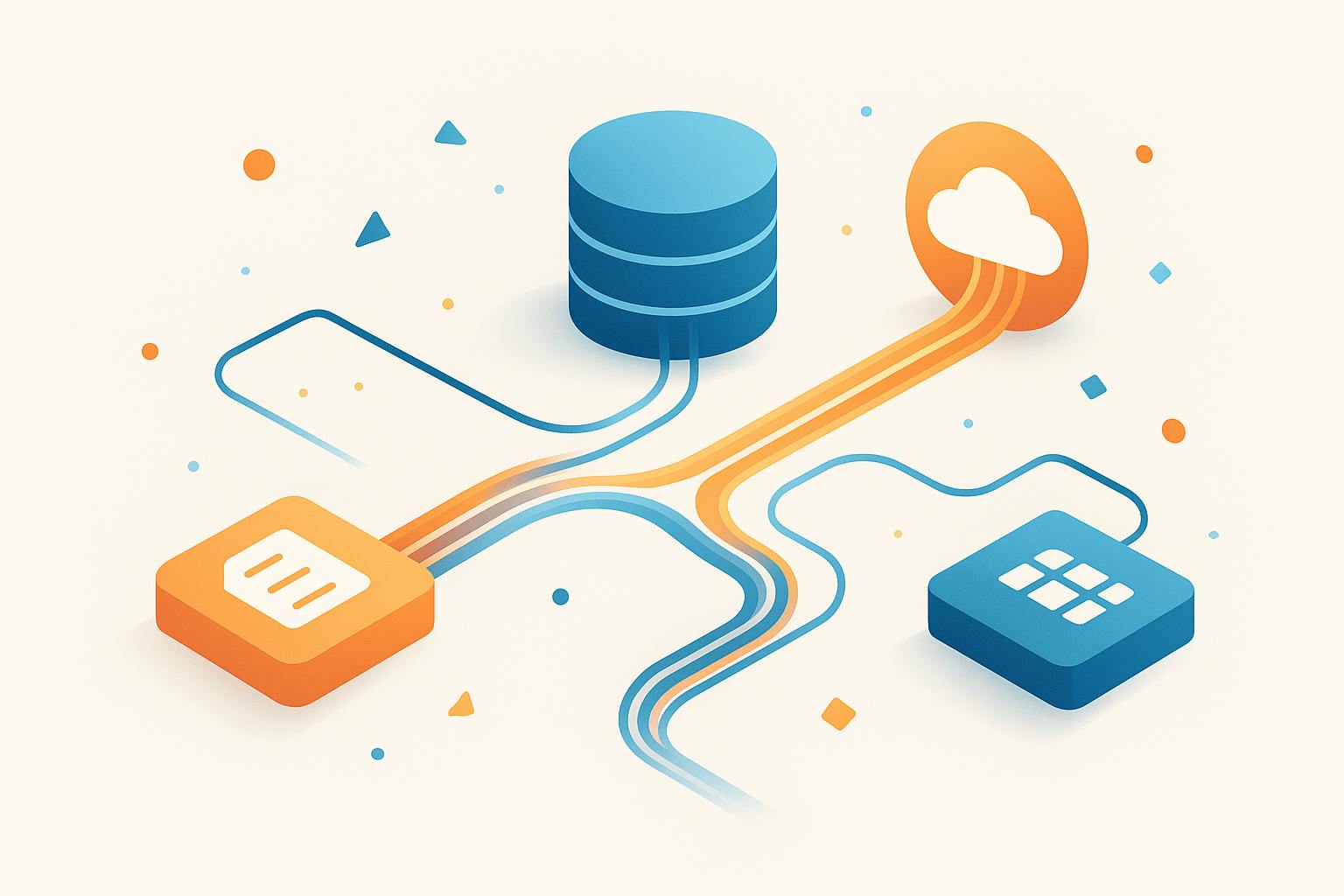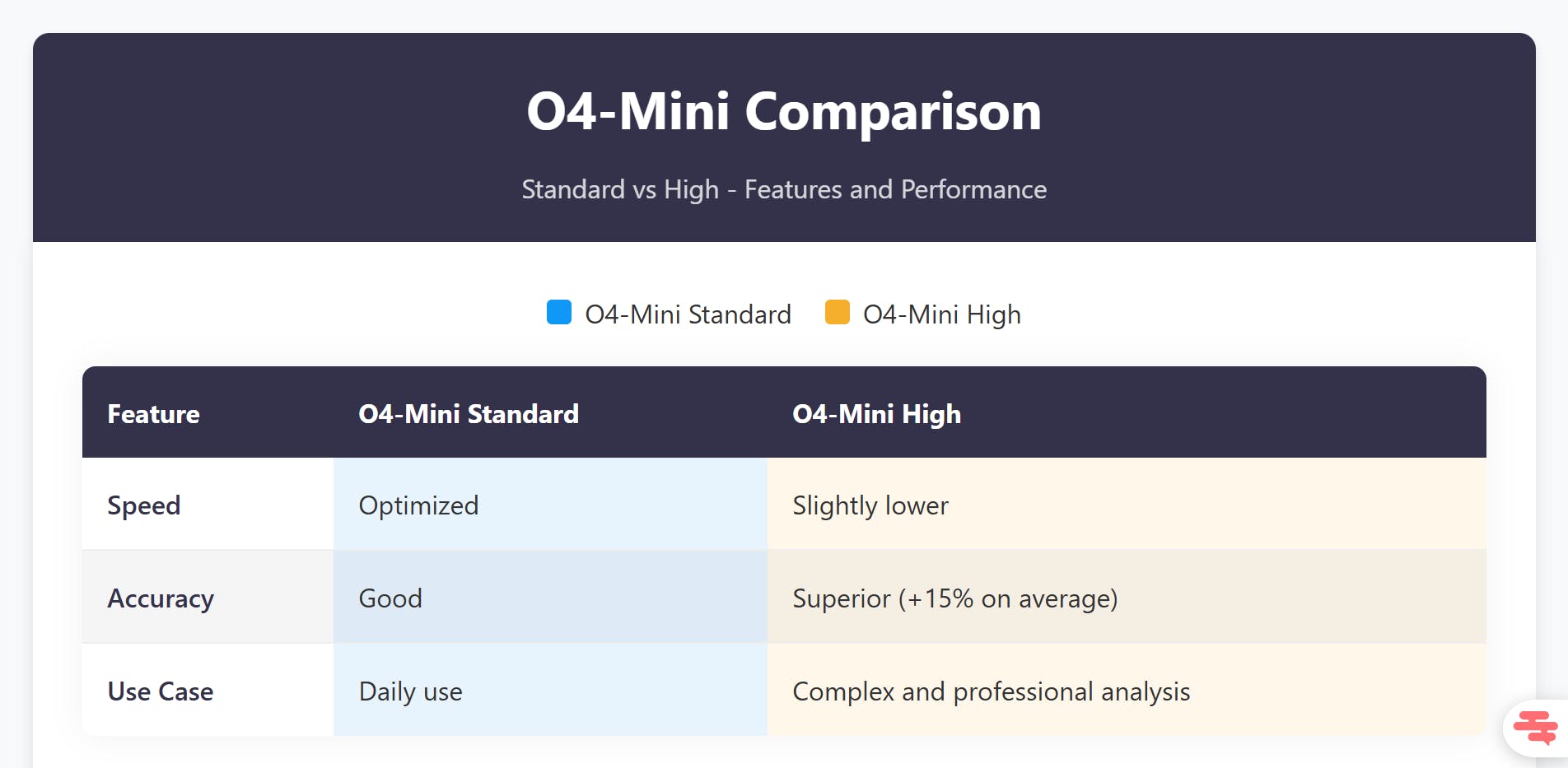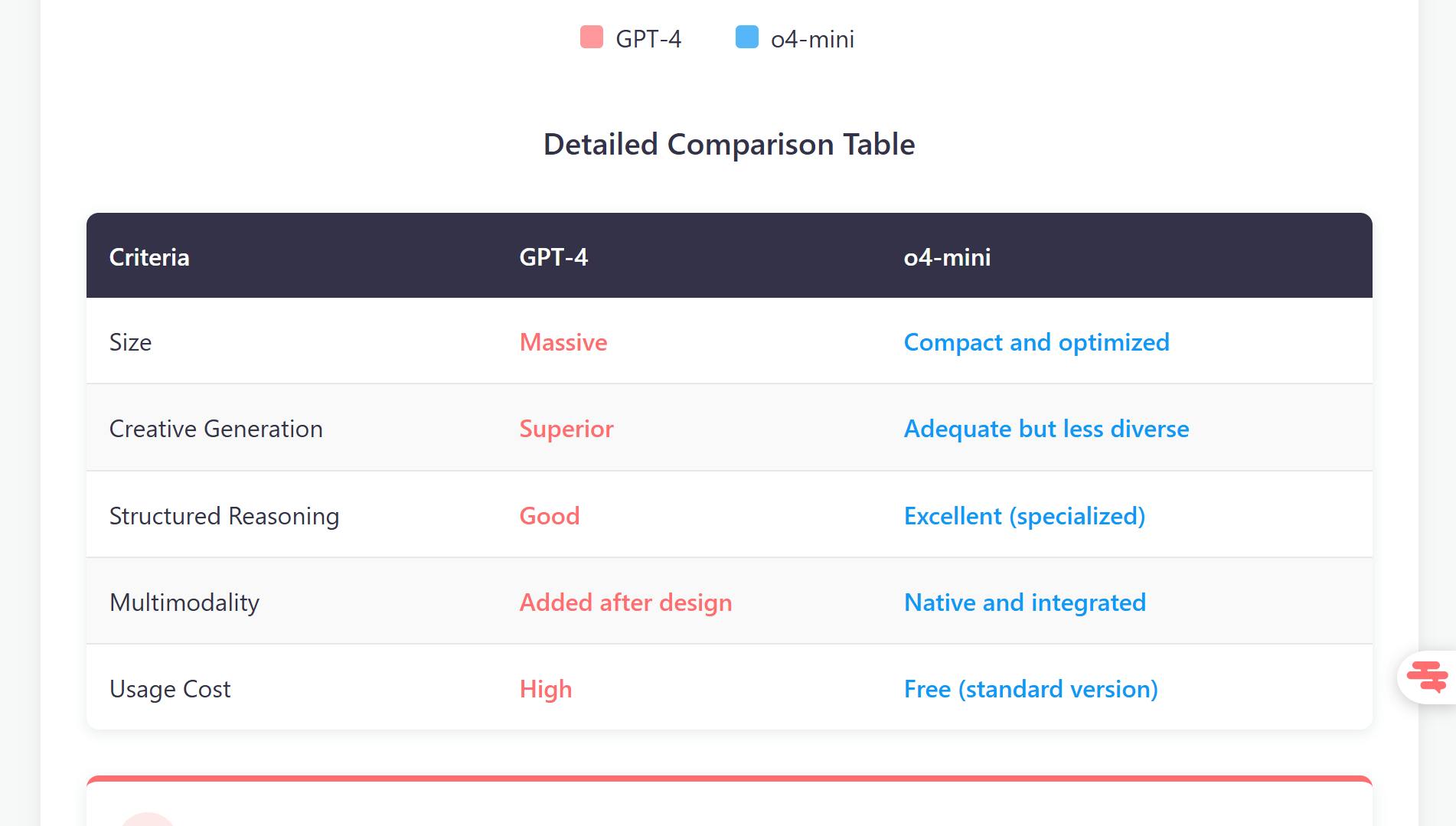
Jul 17, 2025
Table of contents :
OpenAI o4-mini: everything you need to know about this model
You're probably wondering what truly sets this model apart and how it could transform your daily AI interactions. Discover everything you need to know about o4-mini, its revolutionary capabilities, and why it represents a major advancement in democratizing artificial intelligence.
The o4-mini is OpenAI's latest addition to its "o" series, specifically designed to optimize AI reasoning capabilities. Officially announced on April 16, 2025, this model succeeds o3-mini while taking a radically different approach: making cutting-edge AI accessible to everyone. Its rollout will follow a phased deployment, with priority access for Enterprise and Education users starting April 2024, before opening to the general public in 2025.
Unlike OpenAI's previous premium models, o4-mini will be accessible to all ChatGPT and Swiftask users. This strategy marks a turning point in OpenAI's policy, clearly aiming to democratize access to advanced AI technologies.
The o4-mini represents a strategic evolution in OpenAI's portfolio. While GPT models focus on versatile text generation, the "o" series prioritizes structured reasoning and analytical capabilities. This positioning is crucial for understanding o4-mini's place:
This new architecture demonstrates a desire for more refined AI market segmentation, where o4-mini serves as an accessible gateway to advanced capabilities previously reserved for premium subscriptions.
OpenAI offers two variants of its compact model:

The "high" version distinguishes itself primarily through superior analytical depth, particularly useful for tasks requiring nuanced reasoning or analyzing long, complex contexts.
The o4-mini excels particularly in three key areas: mathematics, coding, and visual analysis. With a 20% performance improvement over o3-mini in these domains, this compact model demonstrates that efficiency can go hand-in-hand with accessibility.
Its main innovation lies in its native multimodal capability, allowing it to process text and images simultaneously without requiring complex integrations. This functionality proves particularly powerful for:
Multimodal processing is no longer just an add-on but an integral part of the model's architecture, enabling more natural and contextual reasoning.
Unlike previous models that treated images as separate elements, o4-mini integrates visual analysis directly into its reasoning process. This approach enables particularly innovative applications:
This ability to "think visually" represents a significant advancement in how AI interacts with graphic content, paving the way for assistants truly capable of understanding our everyday visual environment.
At the core of o4-mini is the "chain-of-thought" architecture, a system that allows the model to break down complex problems into successive logical steps. This approach offers three major advantages:
This architecture also comes with a new security technique called "deliberative alignment," which deeply analyzes the ethical and security implications of requests, significantly reducing false positives in sensitive content filtering.
Against OpenAI's flagship model, o4-mini presents a different but complementary skill profile:

While GPT-4 remains superior for open creative tasks and diverse content generation, o4-mini surpasses it in structured technical domains like mathematics, programming, and data analysis, while being much more financially accessible.
Compared to its direct predecessor, o4-mini brings several significant improvements:
These advantages make o4-mini not just an incremental update, but a deep architectural redesign aimed at optimization and accessibility.
One of the most revolutionary aspects of o4-mini lies in its exceptional cost-performance ratio. OpenAI has succeeded in creating a model that, while smaller and less costly to run, maintains or improves performance in key areas.
This optimization translates into:
By democratizing access to advanced AI this way, OpenAI is disrupting the language model economy and opening the door to much wider adoption of these technologies.
Three sectors in particular will gain considerable advantage from o4-mini's unique capabilities:
The combination of accessibility and specialized performance makes o4-mini a tool of choice for these industries where precision and transparency are essential.
In everyday life, individual users can leverage o4-mini for various tasks:
The free accessibility of these advanced features represents an unprecedented democratization of AI tools for the general public.
For digital professionals, o4-mini opens new possibilities:
These capabilities, previously reserved for premium subscriptions, become accessible to all creators, fostering innovation in the digital ecosystem.
OpenAI's o4-mini model marks a decisive turning point in artificial intelligence evolution by combining advanced performance with unprecedented accessibility. Its availability, native multimodal capabilities, and optimized architecture make it a revolutionary tool for numerous sectors.
author
OSNI

Published
April 28, 2025